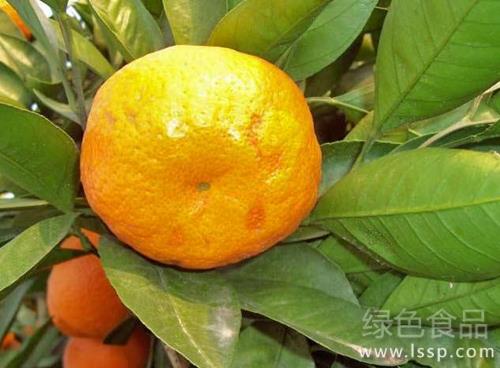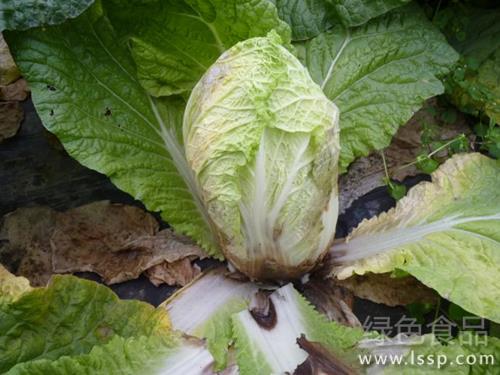Control measures of kiwifruit canker with long spots and withered trunk in red spots of leaves
Kiwifruit canker disease is a bacterial disease, which has the characteristics of concealment, outbreak and destruction. It cannot be judged before the appearance symptoms appear. Once the symptoms appear, the loss cannot be compensated. The branches die and the trunk produces disease spots in light cases, and the kiwifruit tree dies in severe cases.

kiwifruit bacterial canker disease
(i) Symptoms of disease:
It mainly damages leaves, fruits and branches, seriously affecting the yield and quality of kiwifruit. The disease starts from the bud of stem vine, dermatome, deciduous scar and branch bifurcation, showing water stain at the beginning, expanding disease spot after, deepening color, separating cortex and xylem, and showing soft state by hand pressure. In the later stage, the cortex of the affected part is cracked longitudinally, white mucus flows, and then turns reddish brown. The lesion extends around the stem and is dissected with a knife. The cortex and pith turn brown and the pith is full of milky white pus. The upper branches of the affected stem are dead. After the disease occurs at the base, the upper branches die, and new branches can sprout near the ground or rootstock. The leaves are diseased, with long red dots, indistinct yellow halo circles around the periphery, and irregular dark green spots of 2~3mm later. The leaves are dark green in color, yellow halo is obvious, and the width is about 2~5 mm. Under humid conditions, the rapid expansion of water-like spots, spots limited by veins and into a polygonal.
(ii) Route of transmission, conditions of incidence:
Kiwifruit canker disease spread mainly through seedlings, scions and so on. Seedlings are more susceptible to infection than adult trees, and the older they are, the lighter the disease. Low temperature and high humidity are beneficial to the disease. The average temperature in spring is 10~14℃. In case of strong wind and rain or high humidity and rainy days, the disease is easy to spread. The shoot growth period is the high incidence period of canker disease.
(c) Prevention measures:
1. Enhance tree vigor and improve soil fertility. Increase organic fertilizer, improve soil, make soil loose and fertile, conducive to kiwi root expansion and deep penetration, promote formula fertilization, kiwi fruit should be real-time fruit, reasonable load, scientific management, maintain healthy tree vigor, improve disease resistance.
2. Cultivate disease-resistant varieties: pay attention to breeding, cultivation and planting disease-resistant varieties, gradually eliminate susceptible varieties, and fundamentally improve the resistance of excellent kiwifruit varieties to canker disease.
3. It is strictly prohibited to introduce seedlings from epidemic areas, and foreign seedlings should be treated. Disinfection method is: each milliliter contains 700 units of agricultural streptomycin solution added to 1% alcohol as an auxiliary agent, disinfection for 1.5 hours.
Control of kiwifruit canker
4. Reduce the invasion route of germs. Trimming in December, pruning tools with 90% alcohol disinfection, disinfection of a cut once, smooth knife edge, reduce large wounds. After winter pruning, timely spray "close three mouths"(fruit stalk mouth, petiole mouth and shearing mouth), and take the dead leaves with germs out of the garden and burn them intensively. Combined with pruning, remove diseased branches, diseased leaves, long branches, drooping branches, etc., and cut off all the branches flowing through the pus to reduce the source of infection. From the end of February to the middle of March is the bleeding period of kiwifruit plants, and it is not suitable for pruning. Spring canker disease peak period of regular search, once found more seriously infected kiwifruit plants to be promptly removed burned, control the spread of bacteria.
5. Chemical control. After fruit harvest or before winter, combined with orchard pruning, generally spray 1~2 times of 3~5 Baume stone sulfur mixture or 1∶1∶100 Bordeaux mixture; spray 1∶1∶100 Bordeaux mixture or 50% copper succinate (DT) WP 500 times solution from the beginning of spring to before germination; spray 500~800 times solution of 50% carinone (Chunlei·Wangtong) WP from germination to flowering, spray once every 10 days.
When disease is found, timely scraping rod coating and spraying: Scratch the spots first.(The diseased bark and sawdust are burned after being transported out of the garden). When it is close to good skin, after scraper disinfection, scrape a part of good skin, and then use 95% bacteria spirit original powder 500 times or 60% Baijuntong 30 times or 5% bacteria poison cleaning agent 50 times to coat the rod, apply 4~ 5 times, once every 7 days, and spray 4~5 times in combination with 95% bacteria spirit original powder 2000 times plus penetrant or 5% bacteria poison cleaning agent 300 times plus penetrant, once every 7 days.
Vertical drawing and spraying control: use a sterilized knife to make vertical drawing on the diseased spots of kiwifruit branches, the cut is larger than the diseased spots, and then apply with chemicals for 4~5 times, once every 7 days, and at the same time combine with spraying for 4~5 times, once every 7 days, and use 95% CT bacteria original powder 2000 times plus penetrant or 5% bacteria poison clearing agent 300 times plus penetrant and other chemicals.
- Prev

Prevention and control of citrus anthracnose with withered leaves and withered shoots
Prevention and control of citrus anthracnose with withered leaves and withered shoots
- Next

Prevention and control of soft rot of inverted cabbage on the push of Chinese cabbage rhizome rot
Prevention and control of soft rot of inverted cabbage on the push of Chinese cabbage rhizome rot
Related
- Fuxing push coffee new agricultural production and marketing class: lack of small-scale processing plants
- Jujube rice field leisure farm deep ploughing Yilan for five years to create a space for organic food and play
- Nongyu Farm-A trial of organic papaya for brave women with advanced technology
- Four points for attention in the prevention and control of diseases and insect pests of edible fungi
- How to add nutrient solution to Edible Fungi
- Is there any good way to control edible fungus mites?
- Open Inoculation Technology of Edible Fungi
- Is there any clever way to use fertilizer for edible fungus in winter?
- What agents are used to kill the pathogens of edible fungi in the mushroom shed?
- Rapid drying of Edible Fungi

